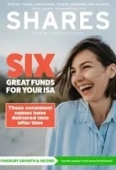What are ‘relevant earnings’ when it comes to claiming pension tax relief?

I understand I will get tax relief on my pension contributions up to my ‘relevant earnings’ but what are these? Are they my earnings or do they include my investment income as well?
Can I still receive tax relief even if I have not paid any tax on my earnings (because they are too low)?
Caroline
Rachel Vahey, AJ Bell Head of Public Policy, says:
A few weeks ago, I wrote about how much people could pay into a pension and receive tax relief. For what seems a simple question, the answer can be quite complicated. I discussed how there are two different allowances.
The first is a maximum of £3,600 or 100% of the pension saver’s relevant UK earnings, whichever is higher.
‘Relevant earnings’ are, generally, any earned income, and includes pay, wages, bonus, overtime and some commission. It also includes self-employment income derived from carrying out a trade, profession or vocation.
If someone receives a redundancy payment, generally the first £30,000 is tax free and doesn’t qualify as earnings for income tax or tax relief purposes. But any money above this usually qualifies as relevant UK earnings.
WHAT ISN’T COUNTED?
However, there are some important sources of income that are not counted as relevant earnings, including investment income, dividend income, pension income and some buy-to-let income. (Some rental income may be included if it’s in respect of a UK or EEA furnished holiday lettings business.)
The second limit is the annual allowance – the standard annual allowance is £60,000 but it could be lower if someone is a very high earner or has previously ‘flexibly accessed’ their benefits, usually by taking taxed withdrawals from their income drawdown plan. If someone pays in more than their available annual allowance, they will get a tax charge which effectively removes the tax relief received above this level.
A SIPP adds in tax relief using a process called ‘relief at source’. That means people pay pension contributions from taxed income and HMRC add in basic rate tax relief of 20%. If someone is a higher or additional taxpayer then they can claim the additional tax relief from HMRC, by completing a self-assessment or, if they are a higher rate taxpayer, by directly contacting them.
So, for example, if someone earned £40,000 a year from their employment and £5,000 from dividends, they could personally contribute up to £32,000 into their SIPP. HMRC will then add in the basic rate tax relief of £8,000, giving a total of £40,000.
Even if someone didn’t earn enough to pay tax, they still would receive basic rate tax relief from HMRC. Someone earning £5,000 a year could pay £4,000 and HMRC still add in £1,000.
If someone earned nothing, they could still pay up to £2,880 into a SIPP, and HMRC will add in basic rate tax relief bringing the total up to £3,600. (This can be especially useful if making contributions to a child’s pension or that belonging to a non-earning partner.)
WHY IT CAN BE DIFFERENT WITH WORKPLACE PENSIONS
However, for low earners, the situation may be different if they pay into a workplace pension. Some of these schemes work on an entirely different basis for tax relief – ‘net pay’. This means pension contributions are taken from a pension saver’s salary before tax is deducted and paid into the pension. This means these pension savers immediately get the full amount of tax relief they are owed and don’t need to reclaim any extra from HMRC.
However, for those who don’t earn enough to pay tax, they lose out through this system compared to those who pay into a SIPP, as they won’t get any tax relief at all.
HMRC is aware of this inequity and intends to pay a top-up to low earners making contributions to these type of pension schemes. This will start in respect of contributions made next tax year – 2024-25. In the following tax year – 2025-26 – HMRC will contact those eligible and invite them to claim this top up. Hopefully, later this year we will get more information on how exactly that will work in practice.
Important information:
These articles are provided by Shares magazine which is published by AJ Bell Media, a part of AJ Bell. Shares is not written by AJ Bell.
Shares is provided for your general information and use and is not a personal recommendation to invest. It is not intended to be relied upon by you in making or not making any investment decisions. The investments referred to in these articles will not be suitable for all investors. If in doubt please seek appropriate independent financial advice.
Investors acting on the information in these articles do so at their own risk and AJ Bell Media and its staff do not accept liability for losses suffered by investors as a result of their investment decisions.
Issue contents
Editor's View
Feature
Great Ideas
Money Matters
News
- Why interest in Currys could spark further mergers and acquisitions in the sector
- What have the top US fund managers been doing recently?
- XP Power plummets to 10-year low after two successive profit warnings
- YouGov looks in great shape amid talk of move to US listing
- Uber unveils $7 billion buyback as ride hailing firm shocks investors

 magazine
magazine








